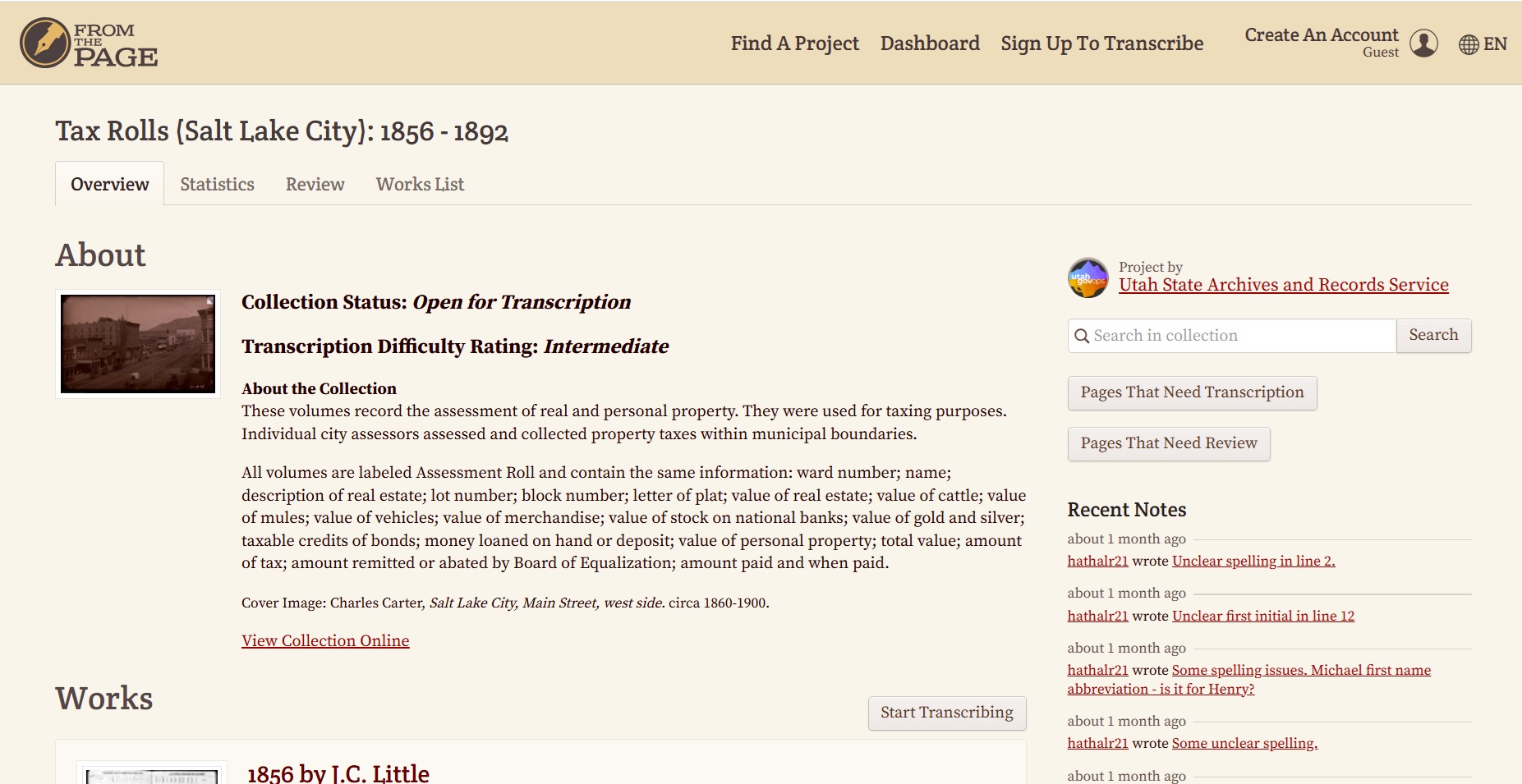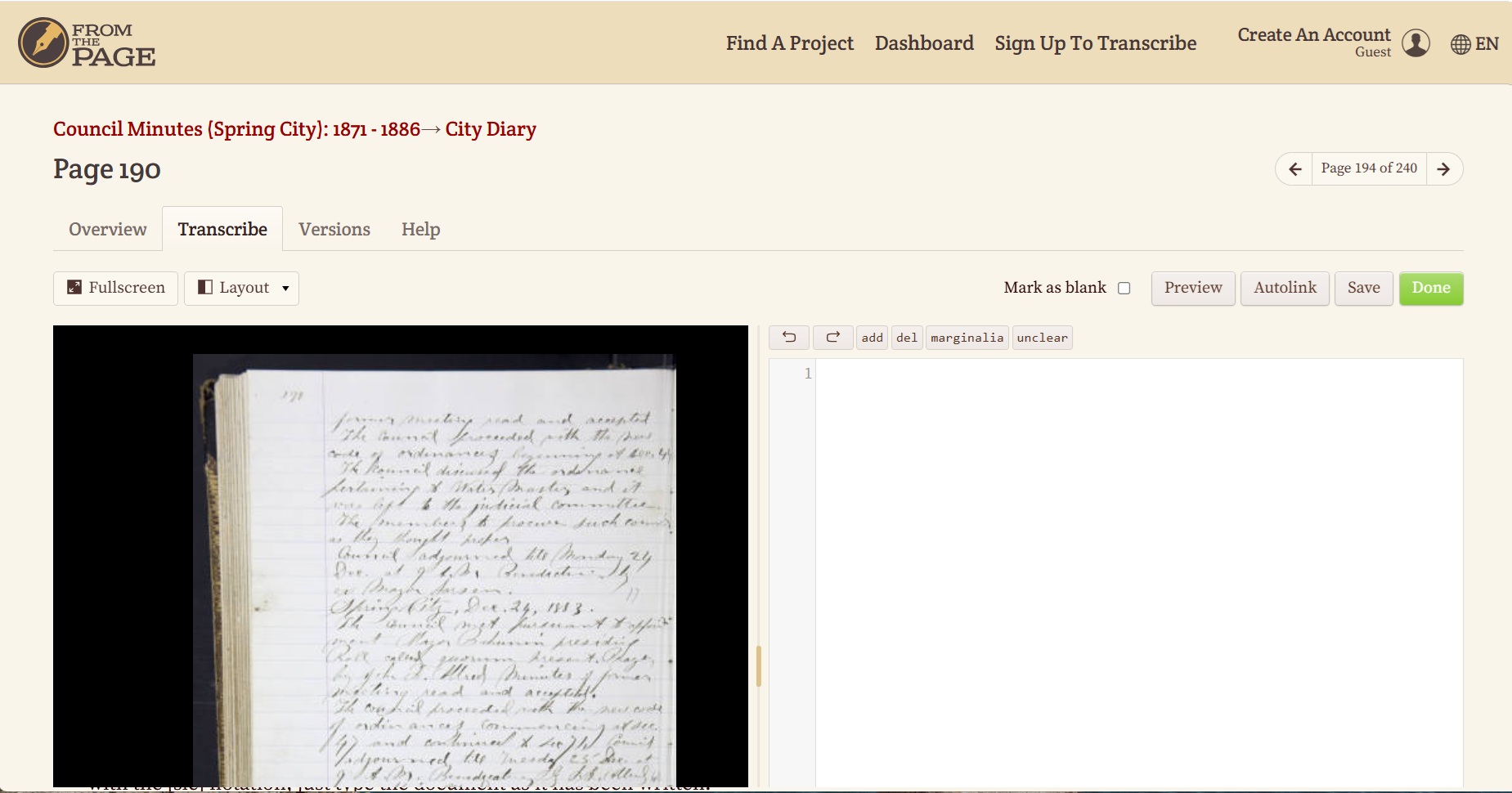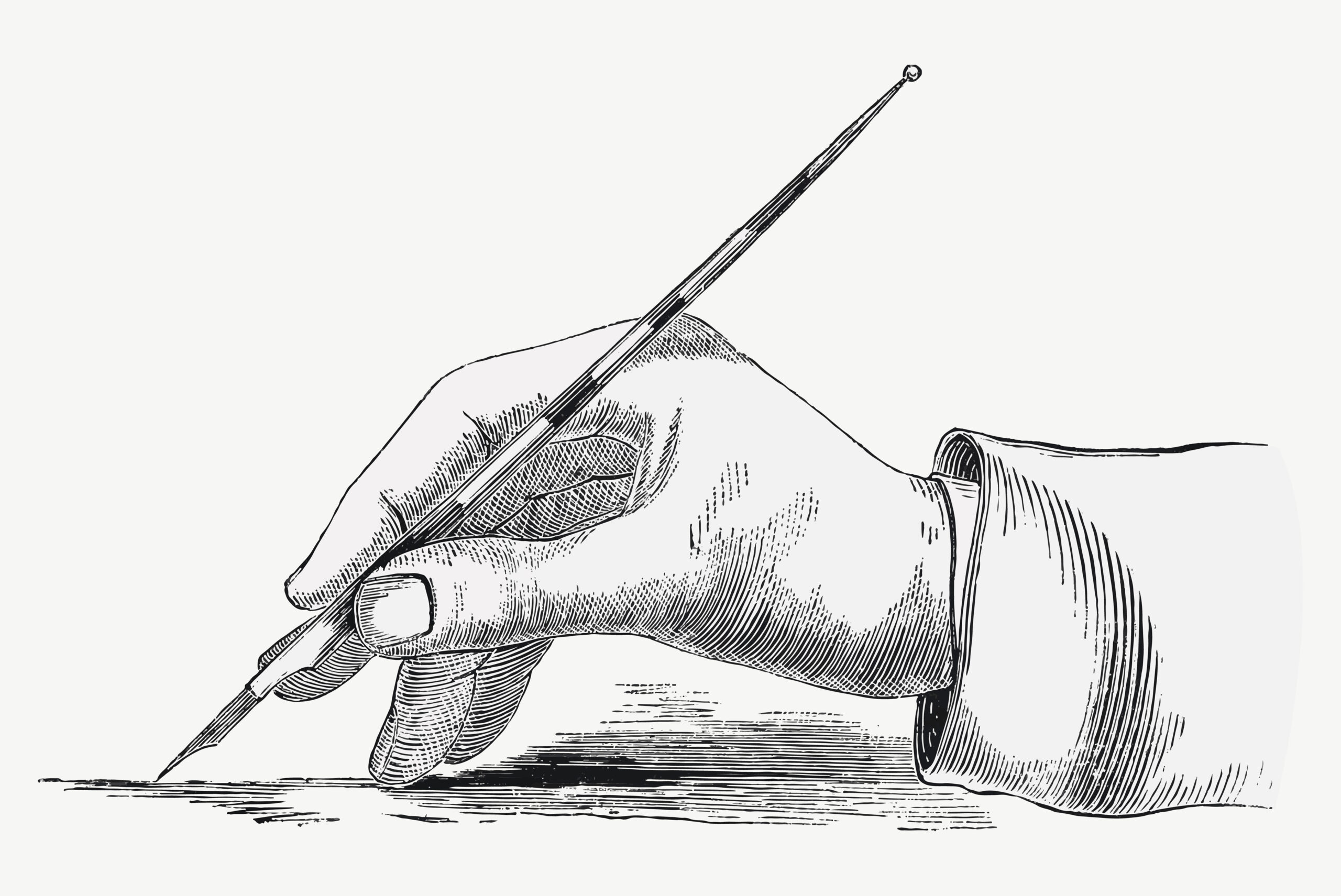Transcription Guide
Get Involved
Open a Project
Navigate to the Utah State Archives and Records Service dashboard on FromThePage, and select a collection to work on. Then open a page within the collection to begin transcribing.

Start Transcribing
Once you have opened a page, you can enter the transcription tab. For pages to be transcribed, a space to begin typing will appear to the right of the scanned page.
Additional tips for specific types of documents can be found on our website, https://archives.utah.gov/ , under the Research Guides tab.

General Transcription Guidelines
- Anyone may transcribe any image at any point
- If you see an error in a transcription or an incomplete transcription, you can transcribe it!
- If another volunteer is currently working on a transcription, a blue warning bar letting you know will appear at the top of the webpage
- Please include all writing you see.
- Do not make corrections in the comments section; if you see a mistake, please correct it in the transcription box
- The comments section is a great way to talk to other volunteers, discuss suggestions or work out wording
- Unfinished transcriptions: If you need to step away from a transcription for a short amount of time, feel free to leave a “Transcription in progress” note in the comments. If you are unable to finish a transcription, please leave a note saying the transcription is only partially finished. The system marks any text in the transcription box as the transcription being finished. The only way to tell if a transcription is unfinished is to manually compare the transcription to the original document.
- When to use “Needs Review” function: If you are uncertain about your transcription, or several areas of your transcription, if you are unable to finish a transcription
- When you have completed a transcription, select “Done”. Selecting “Done” will automatically save the work.
- You can check “Needs Review” and then “Done” if you want a completed transcription to be reviewed.

Transcription Conventions
Stick to the text. Do not re-create document formatting such as seals, stamps, decorative dividers, or similar. Do not insert spacing for centering or indenting a line.
Spelling: Use original spelling and abbreviations if possible. However, all initials in names should include periods.
Hyphenated words: When words are hyphenated and split across lines, complete the word on the first line, hit return and continue with the remainder of the next line.
Punctuation: Add modern periods, but don't add punctuation like commas and apostrophes.
Line Breaks: Hit return once after each line ends. Two returns indicate a new paragraph, which is usually indentation following the preceding sentence in the original.
Illegible text: Indicate illegibility with the provided markup tools.
New Lines: A single newline indicates a line-break in the original document, and will not appear as a break in the text in some views or exports. Two newlines indicate a paragraph, and will appear as a paragraph break in all views.
Page Orientation: For portions of documents written in different orientations (like cover pages with headings and pre-printed forms) transcribe anything written starting at the top and add new paragraphs as you work down the page.

You might also like...
Indexing Guide
Index Archives records.
From The Page
Learn about the tool Archives uses to transcribe and index records.